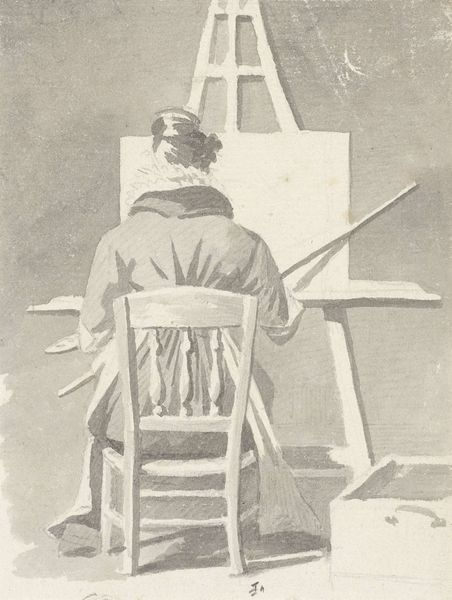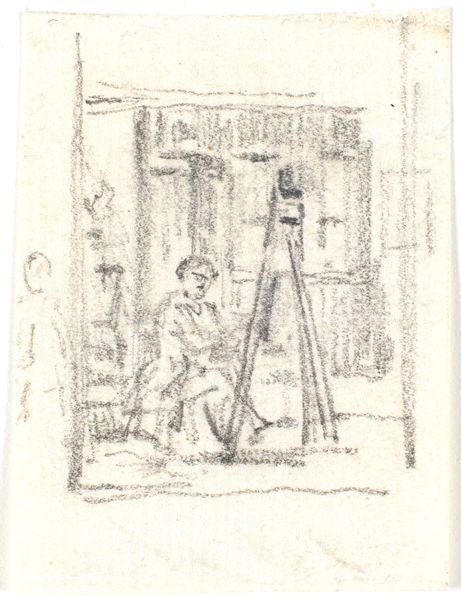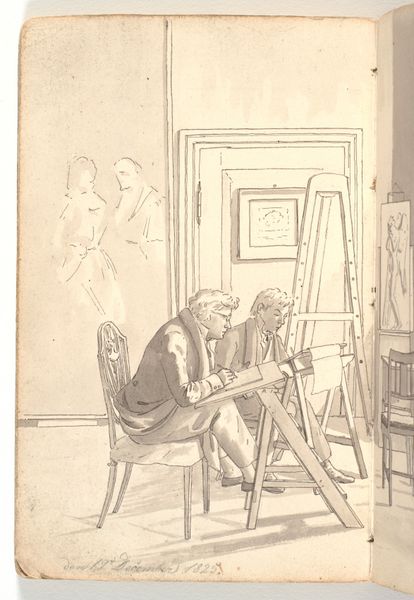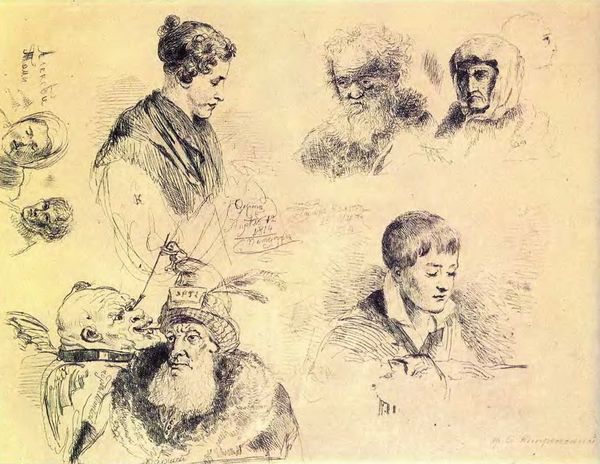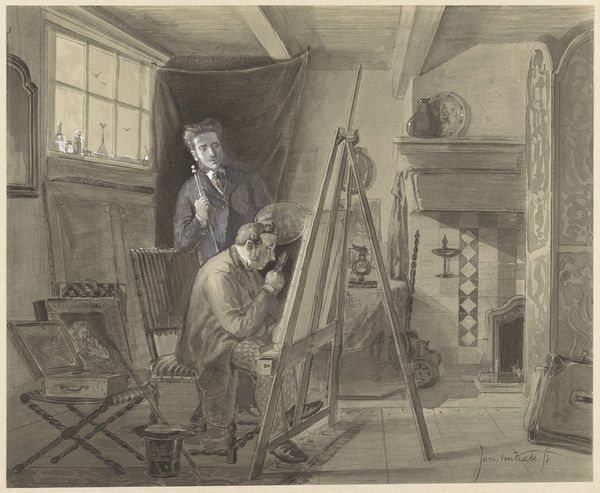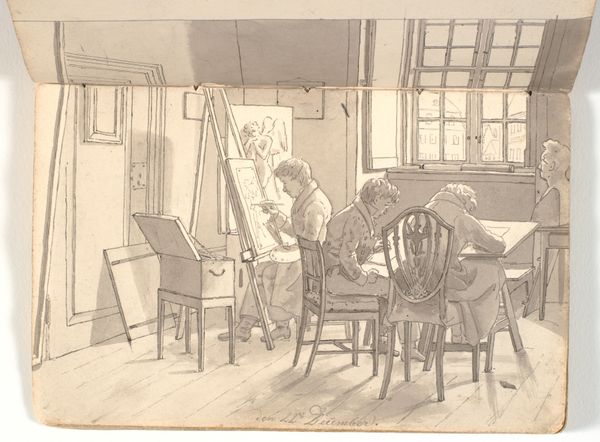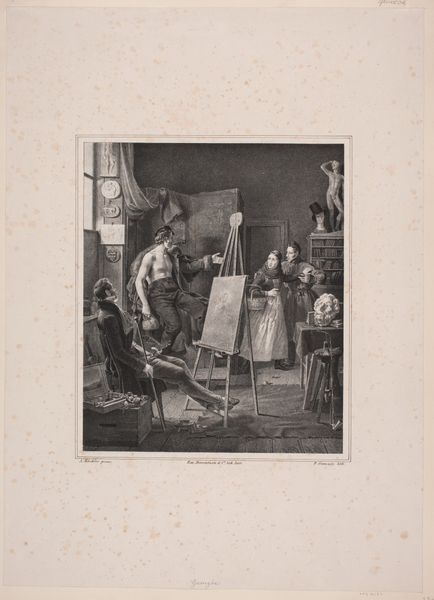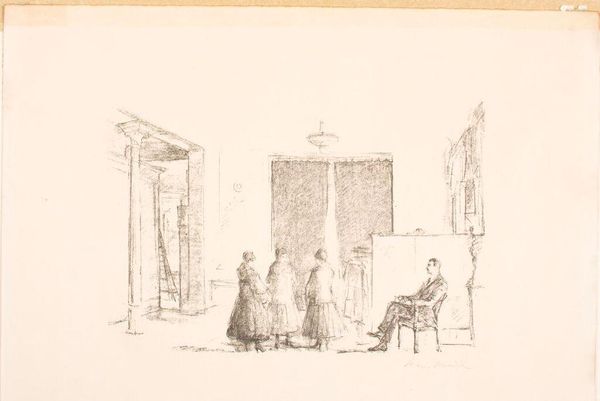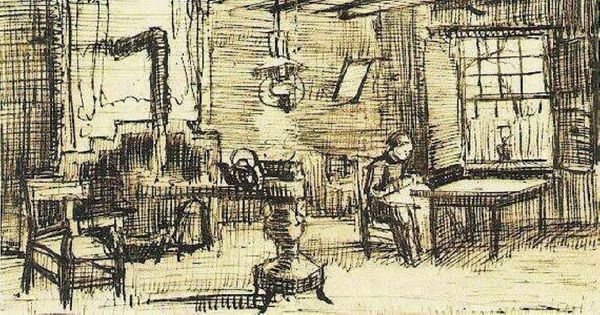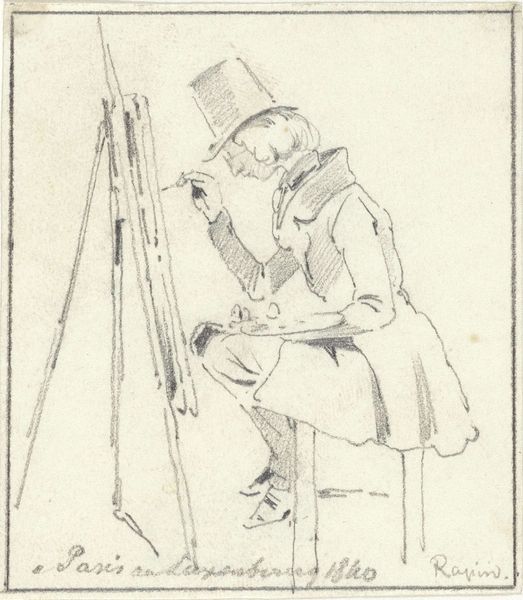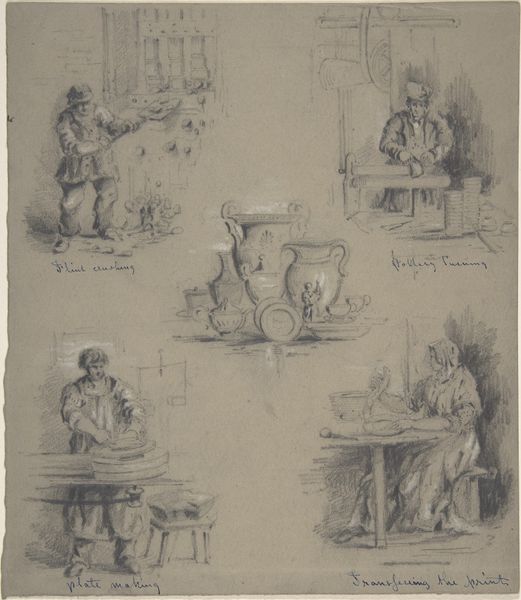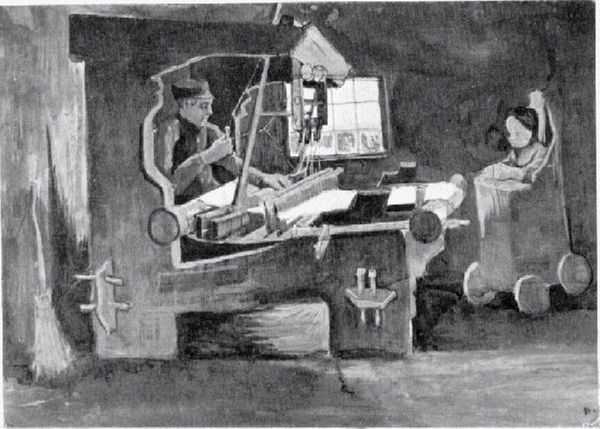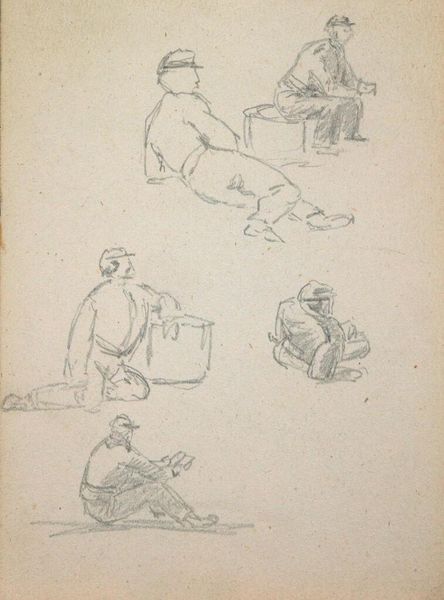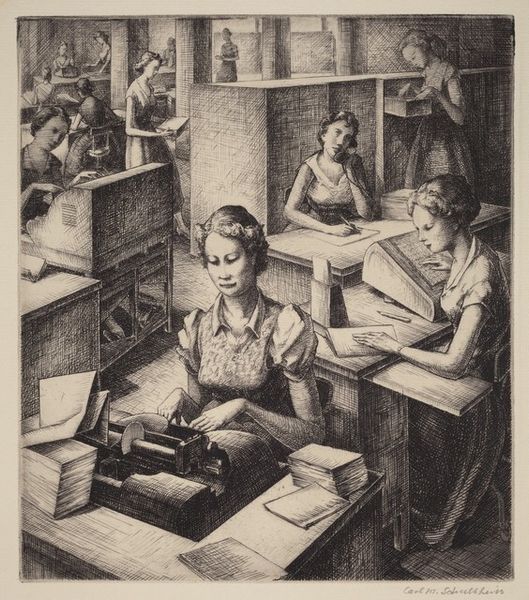
drawing, charcoal
#
portrait
#
drawing
#
pencil sketch
#
charcoal drawing
#
pencil drawing
#
portrait drawing
#
charcoal
#
academic-art
Copyright: Public domain
This is Vajda Lajos’s sketch of the painter school dating to 1923. The most powerful symbol captured is the artist's studio itself – a space that becomes a crucible for the eternal act of creation. Note the repeated motif of the easel, appearing like a skeletal structure, supporting canvases that reflect the human form. This act mirrors the classical tradition of studying the human form, echoing the Renaissance obsession with anatomy and proportion. The plaster bust of a classical figure, included here, further reinforces this connection to the past. The studio, with its tools and models, serves as a theater where the artist reenacts the drama of creation, striving to capture not just likeness but the very essence of being. This creative struggle engages viewers on a subconscious level, reminding us that the past is never truly gone, but is constantly being reinterpreted in the present. Lajos’s studio is a microcosm of cultural memory, revealing how artistic traditions resurface and evolve through the ages.
Comments
No comments
Be the first to comment and join the conversation on the ultimate creative platform.
